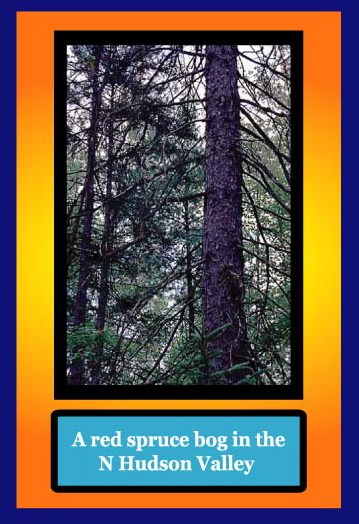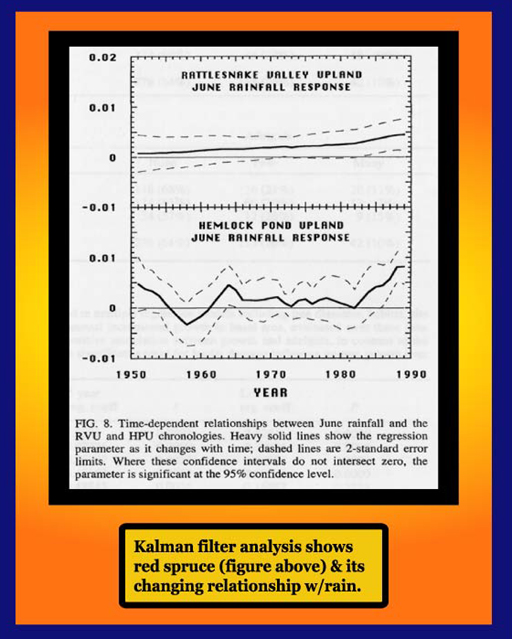
|
Climate modellers have predicted, with a 90% probability, that global climate over the
next 100 yrs will warm 1.7-4.9 degrees Celsius. A primary question is, "How will
trees and forests respond to such a rapid climate change?"
Surprisingly, there is little information on what climatic factors are most important for tree growth at low elevation, mid-latitude forests. Tree-Ring Lab researchers are trying to fill in these data gaps for the Hudson Valley. |
|
upland population structure and climate responses.
Webb, S.L., Glenn, M.G., Cook, E.R., Wagner, W.S. and |

|
This study was conducted in the early 1990s on red spruce growing near a southern
range limit in northern New Jersey.
Climate response analysis showed that most of the upland sites sampled grew better with increased precipitation during March and June. The bog red spruce showed no such response. |

|
The upland populations also became more drought stressed over the last 50 years. It was concluded
that local pollution may be the cause for the change in the climate/growth relationship.
Plant ecophysiologists believe that trees growing near their southern range limit avoid heat stressed by growing on wet sites or in regions with greater precipitation. Thus, it could also be that warming in the NE US over the last 50 yrs has outstripped the water requirements of red spruce, increasing their heat stress and sensitivity to drought. |
On to the next page of the Climate Change & Range Limits page.
last updated 10/01